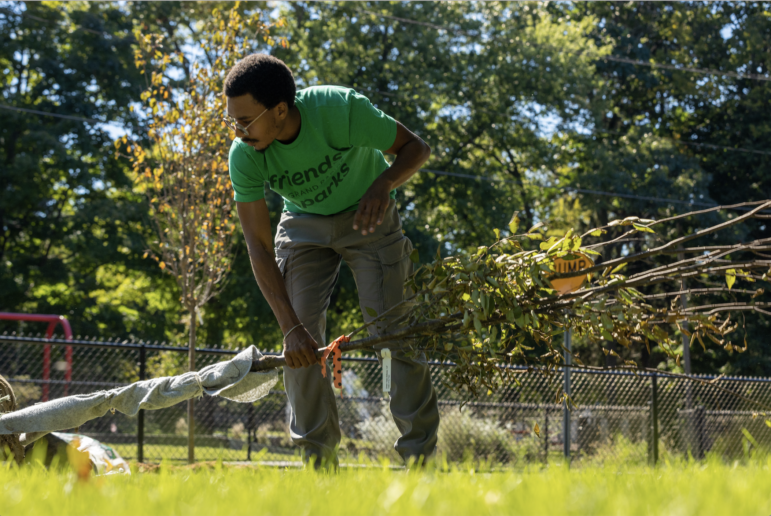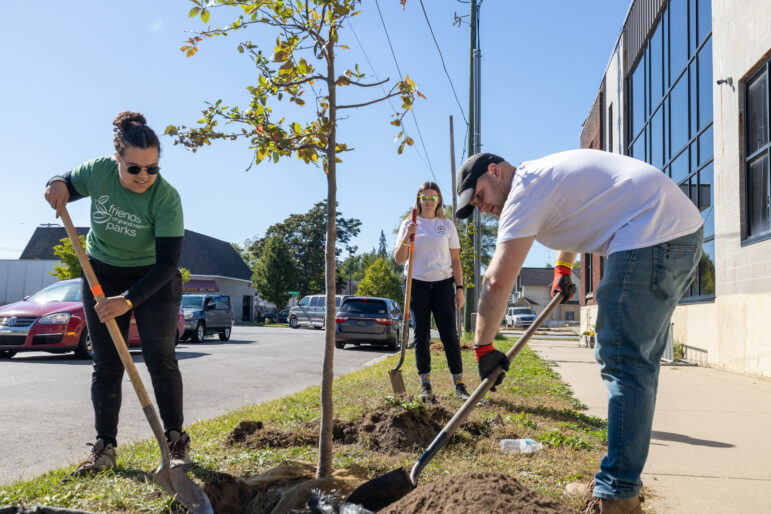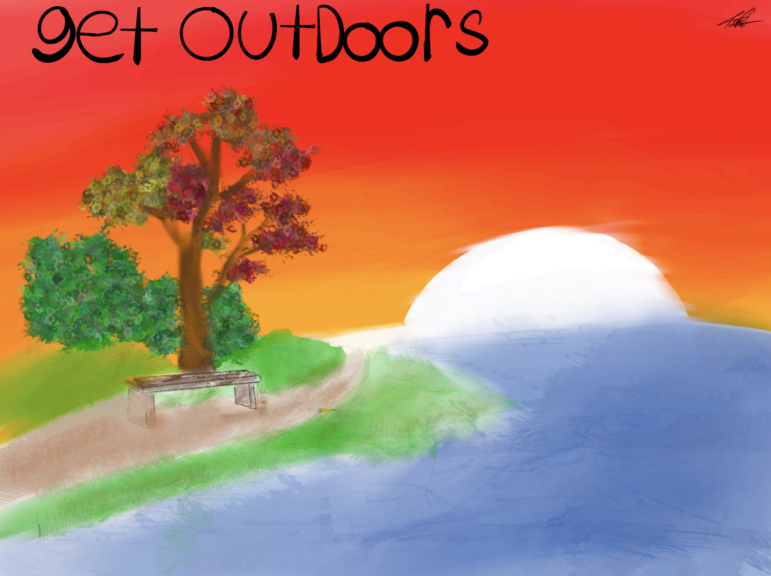
Friends of Grand Rapids Parks
A Friends of Grand Rapids Parks member prepares to plant a tree.By JAKE CHRISTIE
Capital News Service
LANSING – Improving access to green spaces helps communities and individuals alike.
Green spaces, like parks, riverfronts and forests, improve people’s physical and mental health, according to the Centers for Disease Control and Prevention.
In Michigan, there are grassroots organizations that run programs and hold events to engage the public and improve green space equity.
Improving green space equity means increasing the amount and accessibility of green spaces, especially in areas otherwise lacking them.
Among them, the nonprofit Detroit Riverfront Conservancy works to maintain and improve the Detroit RiverWalk, and broke ground for the Ralph C. Wilson, Jr. Centennial Park last year. The project received $40 million from the Ralph C. Wilson, Jr. Foundation in 2018. The park should be finished in 2024, according to the conservancy.
Grassroots efforts to expand green spaces can be found throughout the state.
For example, the Friends of Grand Rapids Parks formed in 2007 and helps maintain parks and educates young people about caring for newly planted trees, Executive Director Stacy Bare said.
More green spaces contribute to lower stress and can increase people’s curiosity and openness to new ideas, Bare said.
But they could also lead to gentrification by increasing property values in areas that develop more green spaces, according to a study from the National Library of Medicine.
But that can be avoided by including residents of communities where development is planned or underway, according to a report from the National Recreation and Park Association.
In addition to expanding access to parks, the organization wants to increase the availability of shade throughout Grand Rapids, but it faces challenges in working with some communities.
“Where there’s a lack of trees and a lack of shade, there’s a lot of historical exploitation,” Bare said, “It’s difficult at times to say that a tree should be a priority.”
But the organization makes it clear to residents that having a tree planted on their property is an option, but if it does plant a tree on someone’s property, it’s also going to take care of it, Bare said.
The group works closely with local residents to expand shade and park equity, and the idea that its work could lead to gentrification is something Bare said he keeps in mind.
Overwhelmingly, residents welcome trees, and the best way they can address concerns about gentrification is to make sure there’s not a street without trees and everybody has access to parks, Bare said.
Jake Christie writes for Great Lakes Echo.

Friends of Grand Rapids Parks
A Friends of Grand Rapids Parks volunteer puts the finishing touches on a newly planted tree.
Asher Freedman